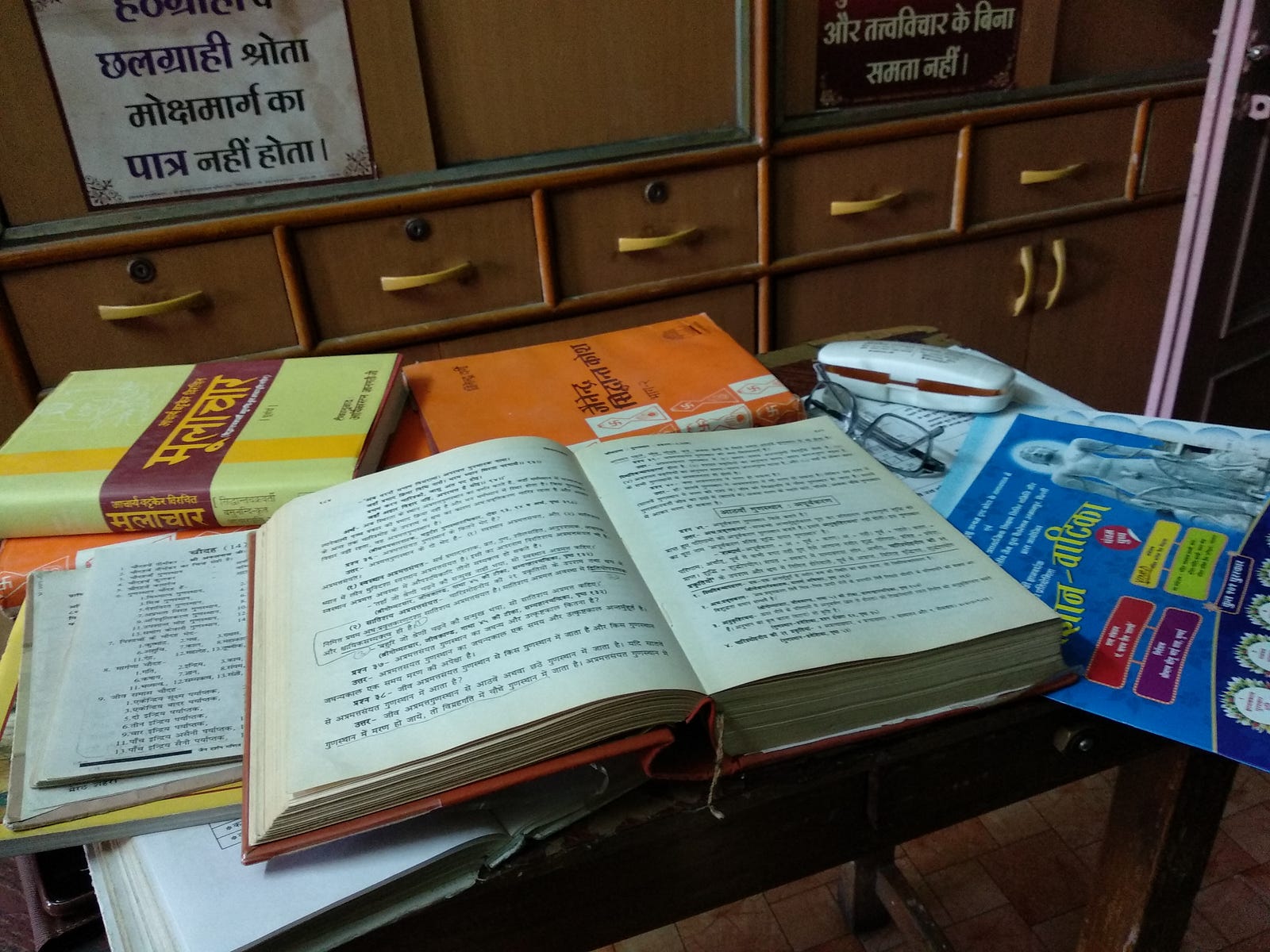| description |
|---|
(Mission Statement) Technological Enhancement in Swadhyay. An attempt to revolutionize the way we do digital swadhyay |
मैं नमो नगन जैन जन ज्ञान ध्यान धन लीन | मैन मान बिन दान घन एन हीन तन छीन ||
Swadhyay (स्वाध्याय) has evolved in a very great manner for many centuries. Previously in the forth era, human beings use to capture all the shrut knowledge in their mind itself. After entering the 5th era (current) — due to depletion of learning capacity — धरसेनाचार्य initiated the first proposal to convert shrut knowledge into a written format (लिपिबद्ध) and that’s how the first Jain scripture (प्रथम श्रुत स्कंद) named षठ खण्डागम came into existence authored by भूतबलि and पुष्पदंत आचार्य.
Thereafter, many Acharyas wrote scriptures and simplified the existing one (टीका). Many Jain followers started creating copies of those scriptures by manually writing the whole shastra word by word. That’s how — the shastra we read today — were preserved for centuries. Around 250 years back, Jaipur was the hub for such work. Hundreds of manually written shastra are still preserved in Jaipur Govt Historic Assets. Then came the printing era — you all very well know this one.
I was stunned with the number of scriptures on my grandfather’s table.
Actually, he is doing an extensive research for filling up the questions of Vigyan Vatika — national level questionnaire competition of Jainism (you can easily detect the book in the image above).
What if we can make the researching process real quick and accurate with the use of technology? It can help us save a lot of time finding stuff and more time to read.
I spent my high school in a Jain Institute, Mangalayatan. Those were the days when we can find almost any scripture from Jinvani Mandir.Tirthdham Mangalayatan (Jinvani Mandir)
One of my Batchmate, Rishabh Jain did a very great job of creating a collection of different scriptures with proper segregation in Jinvani Mandir.
But in today’s era, people are remotely scattered and are busy with their 9–5 job, it’s not possible to carry scriptures with us or even maintain a collection. Even if we download PDFs, it’s not responsive on mobile devices (small fonts).
- What if the fonts automatically adjusts the device screen size (mobile, tablet, laptop etc)?
- What if you’re not able to understand the meaning of a line, para or topic? What if we can easily share a unique link of that “hard to understand” line, para or topic on WhatsApp, Facebook, Twitter and ask for the solution.
A swadhyay doer might face many problems and there are many unsolved doubts occurring while reading a scripture. How can this all be solved?
Technology.

